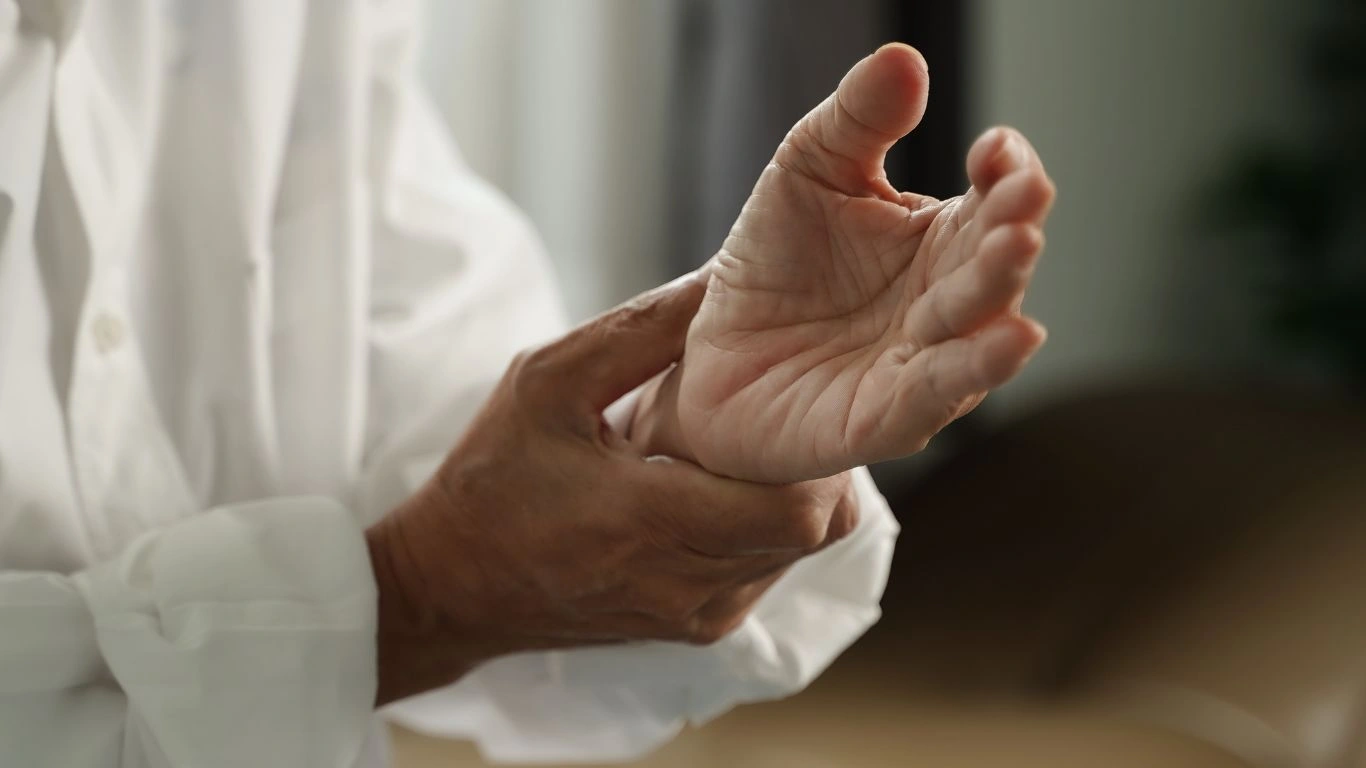Ultimate Guide to Top 7 Rheumatoid Arthritis Pain Relief Techniques
If you’re living with rheumatoid arthritis (RA), you know that managing pain and inflammation can be a daily challenge. The good news is that there are many effective techniques out there that can help alleviate the discomfort and make your life easier. As a Rheumatoid Arthritis expert, I’ve worked with countless individuals navigating this journey, and I’ve seen firsthand how different methods can offer significant relief. In this article, we’ll dive into the top pain relief techniques for rheumatoid arthritis and how you can start incorporating them into your life. Let’s explore what’s worked for my patients and me, and I’ll give you some tried-and-true strategies to bring comfort to your joints.
Understanding Rheumatoid Arthritis Pain
Rheumatoid arthritis is an autoimmune condition where the body mistakenly attacks its own tissues, causing inflammation in the joints. This leads to symptoms like swelling, stiffness, and, of course, pain. For many people with RA, pain can be intense and persistent, affecting daily activities and quality of life. While there’s no one-size-fits-all solution, managing RA pain effectively is crucial to maintaining mobility and overall well-being. In this section, I’ll explain what’s behind the pain you’re feeling and how it impacts your life.
What Causes the Pain?
The primary cause of pain in rheumatoid arthritis is inflammation. When your immune system attacks the lining of your joints, it causes inflammation in the affected areas. This inflammation can result in swelling, tenderness, and stiffness, leading to painful symptoms. Over time, chronic inflammation may even cause damage to your joint tissues, making it harder to move and increasing the level of discomfort.
The Emotional Toll of Pain
Living with constant pain can take a toll on your mental health as well. It’s not just about the physical limitations—RA pain can affect your mood, energy levels, and even relationships. I’ve seen how frustrating it can be for my patients when they feel like their pain is controlling their lives. It’s important to address the emotional aspect of RA pain just as much as the physical. That’s why I always recommend a holistic approach that includes both pain relief strategies and mental health support.
Top Pain Relief Techniques for Rheumatoid Arthritis
Now let’s dive into the methods that have helped countless people with RA manage their pain. Whether you’re looking for a short-term solution or a long-term strategy, there are a variety of techniques you can try. Let’s start with some of the most effective pain relief methods.
1. Medication: The First Line of Defense
Medication is often the first step in managing rheumatoid arthritis pain. Nonsteroidal anti-inflammatory drugs (NSAIDs), such as ibuprofen, can help reduce pain and swelling. But for many people, these aren’t enough on their own. Disease-modifying antirheumatic drugs (DMARDs) are prescribed to slow down the disease progression and manage symptoms. Biologic drugs, which target specific parts of the immune system, are another option for those who have not responded well to traditional DMARDs.
It’s crucial to work closely with your healthcare provider to find the right medication for you. Everyone’s experience with RA is different, and a treatment plan that works for one person may not work for another. Regular follow-ups with your doctor will ensure that your medication is effective and adjusted as needed.
2. Physical Therapy: Strengthening and Flexibility
Physical therapy (PT) can be a game-changer for people with rheumatoid arthritis. I can’t stress enough how important it is to keep moving, even when it feels difficult. PT helps improve joint function, reduce stiffness, and increase strength. A trained physical therapist can design a program that’s tailored to your specific needs, focusing on the areas of your body that are most affected by RA.
In addition to formal physical therapy, simple exercises like gentle stretching, swimming, or walking can help keep your joints mobile and reduce pain. The key is consistency and choosing low-impact activities that won’t strain your body further. I’ve had patients who were initially skeptical about exercise but saw a huge improvement in their pain levels and mobility once they made it a regular part of their routine.

3. Heat and Cold Therapy: A Quick Fix
Sometimes, the simplest solutions are the most effective. Heat and cold therapy can provide immediate relief from pain and inflammation. Cold compresses are particularly effective for reducing swelling and numbing the area, while heat can relax tense muscles and increase blood flow to the affected joint.
Personally, I’ve found that alternating between heat and cold can provide the best results, especially after a long day of joint activity. Use a cold pack for about 15 minutes, then switch to a heating pad for the same amount of time. This technique can help manage pain in the short term, giving you some much-needed relief during flare-ups.
4. Alternative Therapies: Exploring Natural Remedies
If you’re looking for more natural ways to manage RA pain, there are several alternative therapies to consider. Acupuncture and massage therapy are two popular options that can help relieve pain, reduce inflammation, and promote relaxation. I’ve worked with many patients who have found acupuncture, in particular, to be helpful in managing their symptoms.
Another option is taking supplements like omega-3 fatty acids, turmeric, or ginger, all of which are known for their anti-inflammatory properties. While these won’t replace your prescribed medications, they can complement your treatment and help reduce pain and stiffness over time.
5. Lifestyle Changes: Improving Your Overall Health
When it comes to managing rheumatoid arthritis pain, your lifestyle plays a huge role. Maintaining a healthy weight can take pressure off your joints, while a well-balanced diet full of anti-inflammatory foods can help reduce swelling and improve overall health.
Regular exercise is another key lifestyle change that can make a world of difference. As I mentioned earlier, low-impact exercises like walking, swimming, or cycling can help you maintain flexibility and strength without exacerbating your symptoms. And don’t forget the importance of rest. Giving your body time to recover after activity is just as important as staying active.

Managing rheumatoid arthritis pain requires a multifaceted approach, and the top pain relief techniques for rheumatoid arthritis will vary from person to person. But by combining medication, physical therapy, alternative therapies, and lifestyle changes, you can take control of your pain and improve your quality of life. Remember, you’re not alone in this journey. Working closely with your healthcare provider and making adjustments as needed will help ensure you find the right mix of strategies to manage your RA pain effectively. Stay patient, stay consistent, and keep looking for what works best for you!
Advanced Pain Relief Techniques for Rheumatoid Arthritis
In Part 1, we covered some of the basic techniques that can help manage the pain caused by rheumatoid arthritis. But sometimes, you might need more advanced methods to effectively control your symptoms. Whether you’re dealing with a flare-up or looking to prevent one, these techniques can offer you more options for managing your pain and improving your quality of life. Let’s dive into some of the advanced strategies that have helped my patients and me manage rheumatoid arthritis pain effectively.
1. Biologic Medications: Targeting the Root Cause
If you’ve been living with rheumatoid arthritis for a while, you may have already tried traditional DMARDs (disease-modifying antirheumatic drugs) without much success. Biologic medications are a newer class of drugs that can target the specific parts of your immune system responsible for the inflammation in your joints. These medications have revolutionized how we manage RA, and I’ve seen remarkable results in my patients who switch to biologics after struggling with other treatments.
Biologics work by targeting and blocking specific molecules that cause inflammation in the joints. They’re usually administered via injection or infusion and can significantly reduce the severity of RA symptoms, including pain, swelling, and joint damage. It’s important to work with your rheumatologist to find the right biologic for your needs, as they can have different mechanisms of action and side effects.
2. Joint Injections: Direct Pain Relief
When it comes to localized pain, joint injections can provide rapid relief. Injections of corticosteroids or hyaluronic acid directly into the affected joint can help reduce inflammation and lubricate the joint, making movement easier. Many patients I work with find that a well-timed joint injection can offer significant relief, especially during flare-ups when pain is most intense.
However, these injections are not a long-term solution and should be used strategically. Repeated use of corticosteroids can have side effects, so it’s important to use them as part of a broader treatment plan. I always recommend that my patients balance joint injections with other treatments like physical therapy or medication to ensure long-term joint health.

3. Surgery: A Last Resort
While surgery is generally considered a last resort for rheumatoid arthritis pain, it can be a life-changing option for people who have severe joint damage. If medications, physical therapy, and other interventions aren’t providing enough relief, joint replacement or repair surgery might be necessary to restore function and reduce pain.
Joint replacement surgery involves removing the damaged joint and replacing it with an artificial one. While this may sound daunting, it’s important to remember that many people who undergo joint replacement surgery experience significant improvements in mobility and quality of life. As always, this decision should be made in collaboration with your healthcare team, weighing the potential benefits and risks based on your unique situation.
4. Mind-Body Approaches: Harnessing the Power of Relaxation
Rheumatoid arthritis pain isn’t just physical; it’s also mental and emotional. Chronic pain can take a toll on your mental health, leading to stress, anxiety, and even depression. That’s why I strongly encourage my patients to explore mind-body techniques like meditation, mindfulness, and relaxation exercises to manage both their pain and their emotional well-being.
In my experience, practices like yoga and meditation can help reduce stress and improve mental clarity. These techniques don’t just distract you from pain; they can also lower inflammation levels by promoting relaxation and improving your overall mood. By incorporating mind-body practices into your daily routine, you can start to feel more in control of both your body and mind, which is crucial when managing a chronic condition like RA.
5. Diet and Nutrition: Eating for Pain Reduction
What you eat plays a huge role in how you feel, especially when dealing with an inflammatory condition like rheumatoid arthritis. I’ve seen firsthand how making changes to your diet can have a profound impact on pain levels. Eating an anti-inflammatory diet can help reduce swelling and discomfort in your joints, and it’s something I always recommend to my patients.
Foods like fatty fish, olive oil, nuts, seeds, and plenty of fruits and vegetables are packed with antioxidants and omega-3 fatty acids, which are known to fight inflammation. On the flip side, processed foods, sugary snacks, and excessive alcohol can exacerbate inflammation and make your symptoms worse. Taking a holistic approach to managing RA means focusing on both what you put in your body and how you treat it externally. When my patients follow an anti-inflammatory diet, they often report a significant reduction in pain and a greater sense of overall well-being.

Building a Comprehensive Pain Management Plan
When it comes to managing rheumatoid arthritis pain, it’s important to take a comprehensive approach that addresses all aspects of your health—physical, emotional, and mental. Combining medications with lifestyle changes, alternative therapies, and mind-body techniques can create a powerful pain management plan that works for you.
In my practice, I always emphasize the importance of working closely with your healthcare provider to find the best combination of treatments. It’s not a one-size-fits-all situation, and you may need to experiment with different strategies to see what works best. I also encourage regular check-ins with your doctor to make sure your treatment plan is evolving with your needs. The key is consistency and patience; RA pain management is an ongoing process, and with the right tools, you can maintain a high quality of life despite the challenges of rheumatoid arthritis.
Conclusion
There’s no question that managing rheumatoid arthritis pain can be challenging, but with the right combination of techniques, it’s possible to live a full and active life. From medication and physical therapy to diet and mind-body approaches, there are plenty of options available to help you take control of your pain. Remember, you’re not in this alone—partnering with your healthcare team and exploring different treatment strategies can make a world of difference. Stay positive, stay proactive, and most importantly, stay consistent in managing your RA. Your joints—and your overall well-being—will thank you!
Case Studies & Real-Life Examples
To truly understand how these pain relief techniques can transform the lives of people with rheumatoid arthritis, I’d like to share some real-life examples from my practice. These stories highlight how different methods have helped individuals manage their pain and regain their mobility, giving you a more personal insight into the benefits of these treatments.
1. Sarah’s Journey with Biologic Medications
Sarah, a 42-year-old woman, came to me with severe rheumatoid arthritis in her knees and wrists. She had been managing the condition for several years but was struggling with debilitating pain and limited movement. After trying several traditional medications without much improvement, we decided to explore biologics. Sarah began treatment with a TNF-inhibitor, and within weeks, she noticed significant improvements in her symptoms. Her joint swelling decreased, and the constant pain that had become a part of her life finally subsided. While biologics aren’t a cure-all, they provided Sarah with a new lease on life, and now she’s able to participate in activities she had long given up, such as hiking and gardening.
2. Mark’s Success with Diet and Lifestyle Changes
Mark, a 56-year-old man, had been living with rheumatoid arthritis for over a decade. His joint pain had been progressively worsening, and he was becoming more and more reliant on pain medications to get through the day. After discussing various approaches, Mark decided to overhaul his diet and lifestyle. He started incorporating more anti-inflammatory foods, like fatty fish, olive oil, and leafy greens, into his meals. He also began practicing daily mindfulness meditation to manage the stress that often exacerbated his symptoms. Over the course of a few months, Mark reported feeling significantly better. His pain levels dropped, and he found himself with more energy throughout the day. It was a powerful reminder that diet and mental health play huge roles in managing RA pain.
3. Emily’s Relief through Physical Therapy and Joint Injections
Emily, a 63-year-old woman, had been dealing with joint stiffness and pain in her shoulders and hips for several years. She’d tried various treatments, but nothing seemed to offer lasting relief. After discussing her options, we decided to focus on a combination of physical therapy and joint injections. Emily started working with a physical therapist to improve her strength and mobility, while also receiving occasional corticosteroid injections for joint flare-ups. Within weeks, Emily felt a noticeable difference. Her pain was better controlled, and her range of motion had improved. Emily’s story highlights the importance of combining different treatments for a more holistic approach to RA management.
Key Takeaways: What You Need to Remember
When managing rheumatoid arthritis, there’s no one-size-fits-all solution. The key is finding the right combination of treatments that work for you. Whether it’s medication, physical therapy, diet, or mind-body practices, each individual will respond differently to various approaches. Here are the top takeaways to keep in mind:
- Consistency is Key: Regularly following your treatment plan is crucial for managing pain and preventing flare-ups.
- Personalized Care: Work closely with your healthcare team to tailor a treatment plan that suits your unique needs and lifestyle.
- Balance: A comprehensive approach that includes both medical treatments and lifestyle changes is often the most effective way to manage RA pain.
- Mind-Body Connection: Don’t underestimate the power of mental health in managing pain—stress reduction techniques can make a huge difference.
5 FAQs About Top Pain Relief Techniques for Rheumatoid Arthritis
Here are some frequently asked questions that I often get from my patients when it comes to managing rheumatoid arthritis pain. I hope these answers provide you with more clarity on the various techniques available:
1. Are biologic medications safe?
Biologic medications are generally safe, but like all medications, they come with some risks. They work by targeting specific parts of the immune system, which can increase the risk of infections. It’s essential to have regular check-ups with your doctor to monitor your health and adjust treatments as needed.
2. Can diet alone manage rheumatoid arthritis pain?
While diet is an important component in managing rheumatoid arthritis, it’s unlikely to be enough on its own. A healthy, anti-inflammatory diet can help reduce symptoms, but it should be part of a broader treatment plan that includes medication and physical therapy.
3. How often should I get joint injections?
Joint injections are typically used on a temporary basis to provide relief during flare-ups. Your doctor will determine the appropriate frequency, but it’s important to avoid overusing them, as repeated corticosteroid injections can have side effects.
4. Is surgery always necessary for severe RA pain?
Surgery is generally considered a last resort for those with severe joint damage that hasn’t responded to other treatments. Many people with rheumatoid arthritis can manage their pain without surgery, but if your joints are severely damaged, surgery may be an option to improve mobility and quality of life.
5. Can physical therapy really help with rheumatoid arthritis?
Yes! Physical therapy can be a highly effective tool in managing RA pain. It helps improve joint mobility, strength, and flexibility, which can reduce stiffness and improve function. A physical therapist will tailor exercises to your specific needs and abilities.
Bonus: Additional Resources or DIY Tips
In addition to the treatments mentioned, there are several DIY approaches you can try to further manage your rheumatoid arthritis pain:
- Heat and Cold Therapy: Using heat pads or ice packs can help reduce swelling and provide temporary pain relief.
- Essential Oils: Some people find relief by using essential oils like lavender or peppermint for their calming and pain-relieving properties.
- Gentle Yoga: Incorporating gentle yoga poses into your routine can help improve flexibility and reduce joint stiffness.
Appendix: References, Disclaimer, and Call to Action
References:
Disclaimer: This article is for informational purposes only and does not substitute for medical advice. Always consult with your healthcare provider before starting any new treatment or making changes to your current regimen.
Call to Action: If you’re struggling with rheumatoid arthritis pain, don’t wait any longer to explore your treatment options. Reach out to your healthcare provider today and discuss which strategies might work best for you. Managing RA is a journey, but with the right tools and support, you can live a fulfilling life!

Tarra Nugroho is a dedicated Nurse Practitioner with a strong foundation in family and preventive care. She brings both compassion and clinical expertise to her practice, focusing on patient-centered care and health education. As a contributor to Healthusias.com, Tarra translates medical knowledge into clear, empowering articles on topics like women’s health, chronic disease management, and lifestyle medicine. Her mission is simple: help people feel seen, heard, and informed—both in the clinic and through the content she creates. When she’s not caring for patients, Tarra enjoys weekend hikes, plant-based cooking, and curling up with a good health podcast.






